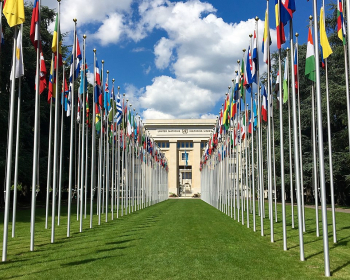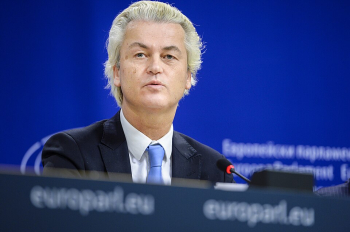
Today, the Commission is presenting the State of Schengen Report 2022. This is the first time the Commission is presenting such report, following
last year's Schengen Strategy. This report is part of the Commission's initiative to reinforce the Schengen governance through a yearly reporting exercise presenting the state of Schengen, identifying priorities for the year ahead and monitoring progress made at the end of a given year. The State of Schengen report will serve as basis for discussions of Members of the European Parliament and Home Affairs Ministers in the Schengen Forum on 2 June, and in the upcoming Schengen Council on 10 June.
Vice President Margaritis Schinas said: “The Schengen area has unified our continent and is emblematic of the European way of life. Over the past year we have taken decisive steps to further strengthen Schengen's governance and rebuild trust in this crucial driver of our economies. Today's reports reflect that unwavering commitment to ensure Schengen emerges stronger from the variety of challenges it has faced.”
Commissioner for Home Affairs Ylva Johansson said: “The freedom to move, live and work in different Member States is held dear by Europeans. Recent crises and challenges have shown that we cannot take this freedom for granted. We will keep working together to deliver on the priorities set out in the State of Schengen Report, and to steer the European Border and Coast Guard to work in a more effective and integrated way. Schengen is a shared responsibility that requires the engagement and commitment of all of us.”
A state of play of the Schengen area and new priorities
The State of Schengen Report 2022 is the starting point for the new annual Schengen cycle. The cycle provides for a regular ‘health-check' on Schengen, allowing to identify problems early on to ensure common responsibility and to promote the uptake of appropriate measures. Interinstitutional discussion will take place at the Schengen Forum on 2 June, and political deliberations will follow in the June Schengen Council. This process is part of the new Schengen governance that enhances participation of all the actors involved to monitoring the functioning of the Schengen area and follow-up with necessary measures. The new Schengen Evaluation and Monitoring Mechanism, which the Commission proposed in June 2021 and which has been recently adopted by the Council, will play a crucial role in this new Schengen governance model.
The report sets a list of priority actions for 2022-2023 that are to be addressed at both national and European level such as:
- implementing the new IT architecture and interoperability for border management,
- making full use of cross-border cooperation tools,
- ensuring systematic checks at the external borders of all travellers,
- ensuring that Frontex reaches the full potential of its mandate,
- lifting all long-lasting internal border controls, and
- adopting the revised Schengen Borders Code.
The report also reminds of the importance of completing the Schengen area and calls upon the Council to adopt the decisions to allow Croatia, as well as Romania and Bulgaria to formally become a part of it, in view of the fact that all criteria have been fulfilled. The same will apply to Cyprus once it has successfully completed the Schengen evaluation process.
The report also presents the priorities resulting from the Schengen evaluations. The Schengen evaluations currently cover external border management, police cooperation, return, the Schengen information System, visa policies and data protection.
While Schengen evaluations during the last years have demonstrated that in general terms Member States implement adequately the Schengen rules, there are some areas where improvements can be made. This demonstrates that the evaluation mechanism is effective and leads to continuous strengthening of the Schengen area. Additional efforts are required notably in the fields of return and the Schengen Information System. Indeed, in an area without controls at the internal borders, solid police cooperation between Member States together with effective implementation of the large-scale information systems, notably the Schengen Information System is indispensable, as well as effective return and common visa policies.
In parallel to the State of Schengen Report, the Commission is also consulting the institutions on the future multiannual strategic policy for European integrated border management, and presenting a report on the implementation of the obligation Member States have to carry out systematic checks at the external borders of the EU.
The future of European integrated border management
With today's Policy Document, the Commission is starting a consultation with the European Parliament and the Council on the future of integrated border management.
- It launches the multiannual strategic policy cycle for European Integrated Border Management, which will guide how all the actors within the European Border and Coast Guard operate over the next five years.
- It sets the way forward reflecting on the main elements of the Integrated Border Management. This includes: border control; search and rescue; risk analysis; inter-agency, EU and international cooperation; return; fundamental rights; research and innovation; and education and training.
- It will lead to a Communication establishing the Multiannual Strategic Policy for European integrated border management,to be adopted by the end of 2022.
Systematics checks at the external borders of the EU
The Commission is also publishing the report on the implementation of the Article 8 of the Schengen Border Code, according to which Member States are under an obligation to carry out systematic checks against relevant databases on all persons crossing the EU's external borders, including persons enjoying the right to free movement. This measure was intended to strengthen the EU's internal security following findings that EU citizens were among foreign terrorists fighters returning to the EU.
The report to the European Parliament and the Council analyses the implementation and impact of these systematic checks. It concludes that the application of systematic checks filled an important regulatory gap, despite challenges faced by Member States in the implementation of these rules. The Commission intends to address those challenges and support Member States in the upcoming review of the Practical Handbook for Border Guards, which is used by Member State competent authorities when carrying out border checks on persons.
Next Steps
The reports adopted today will feed into the next Schengen Forum in June. The upcoming Schengen Council will be the opportunity for Ministers to endorse the policy priorities identified in the State of Schengen Report. Increased political ownership based on dialogue and regular monitoring will ensure implementation of the priorities for the Schengen area. For this reason, the Commission calls on Member States and EU agencies to take the necessary steps to deliver on these priorities and take the necessary follow-up actions. The Commission also invites the Schengen Council in June to endorse the key elements of the new Schengen governance model and the priorities for 2022-2023. The Commission will closely accompany this process both at the political and technical levels, and it will report on progress achieved and follow-up actions at the end of the annual cycle.
Background
Today's proposals complement the EU's continuous efforts to improve Schengen's overall functioning and governance. The Schengen area without controls at internal borders is a historic achievement of European integration. Since its foundations were laid in 1985, it has changed the daily reality of millions of people. Almost 1.7 million people reside in one Schengen State and work in another. People have built their lives around the freedoms offered by the Schengen area, with 3.5 million people crossing between Schengen States every day. In June 2021, the Commission presented the Schengen Strategy taking stock of the challenges the area has faced in recent years and sets out a path forward to make the Schengen area stronger and establish a solid Schengen Governance. Photo by Denise Hastert, Wikimedia commons.
















